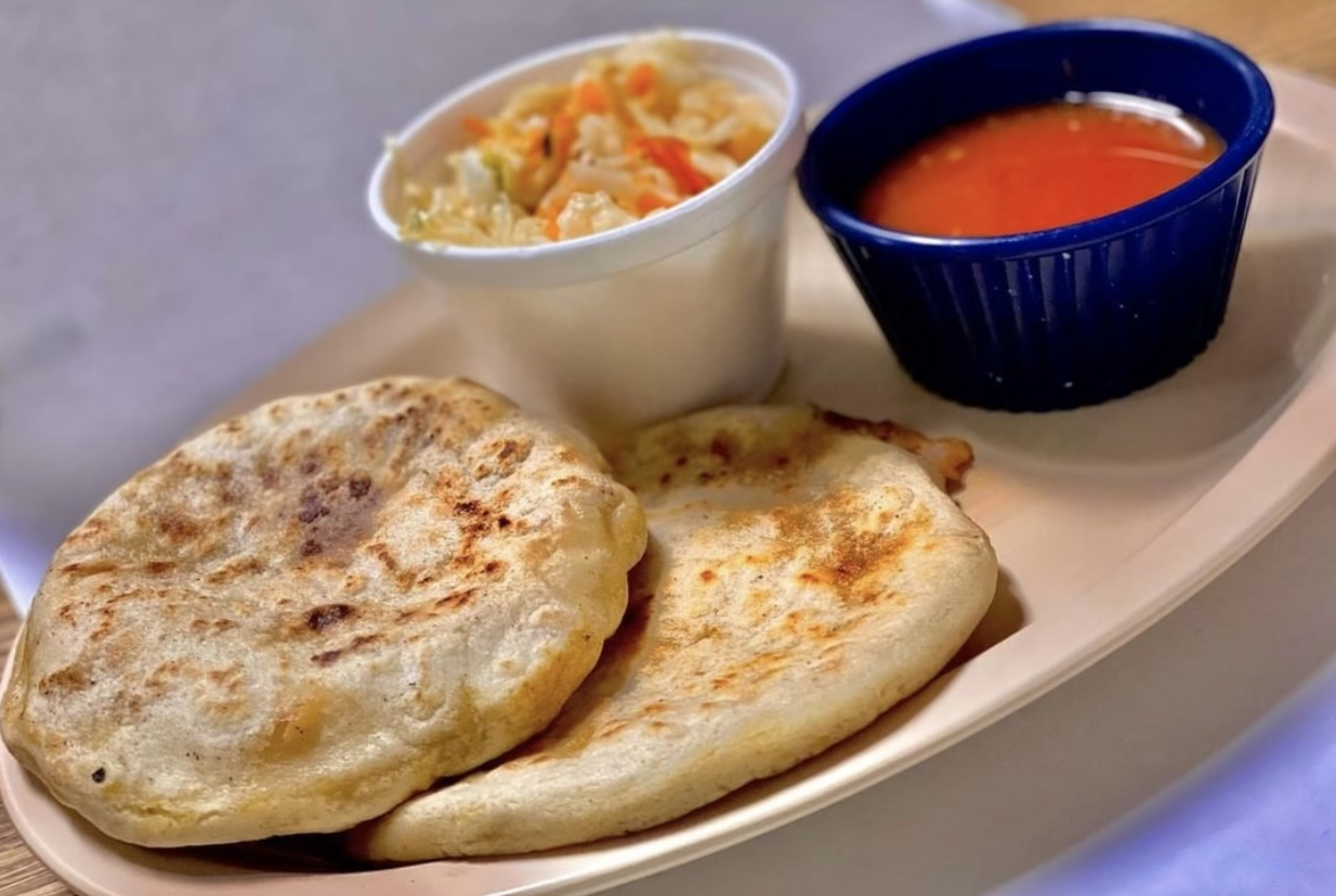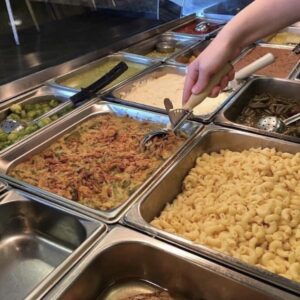Special recipe and blog from Jose Gonzalez of Mercadito Hipano!
Pupusas are a staple of Salvadoran cuisine. The word is derived from the indigenous Pipil language native to parts of El Salvador. It translates roughly to “fatty,” which pushes it close to it’s Mexican cousin, the gordita. The major difference between a gordita and a pupusa is the simple fact that the pupusa is cooked WITH the filling inside.
This recipe makes about 12 pupusas, depending on size. You can refrigerate and keep any excess for future use, up to about a week.
First things first, you will need the ingredients:
Corn Flour (Maseca is the most common brand)
Water
Salt
Frying Oil (preferably canola)
2 Pounds of Pork (Shoulder or Boston Butt)
1 Large Carrot (peeled and chopped)
1 Large Potato (peeled and chopped)
1 Jalapeño (de-seeded, chopped)
So the most time-consuming part of this process is the preparation of the Chicharron mix. Traditionally chicharrones are sections of skin-on pork, deep-fried to a golden crisp. However, for the pupusa filling we’ll want to avoid that fatty layer between the meat and skin. Hence why we’re opting for a shoulder or butt section.
We want to cut the section into 2 inch cubes. Salt the cuts, and bring a pot/pan with oil to frying temperature. Once your oil is ready, use tongs to drop the cuts in on-by-one. Fry each side to a golden brown color (make sure each piece is fully cooked, 145 degrees). After they’re fried, let them drain and cool.
The moment they’re cool enough to handle, you’ll want to start the grinding process. Food processors are an acceptable workaround if you don’t have a meat grinder. Start grinding the pork, carrot, potato, and jalapeño together. Once everything is finely minced/ground, mix it together and start warming a pot/pan to medium heat.
Add the mixture to the pan. The point here is to cook off the moisture from the veggies to achieve a pasty texture. Remember to keep stirring to prevent burning at the bottom of the pan. Ten to fifteen minutes is a standard cooking time for this part. Set your mixture into a sealed container to cool in the refrigerator.
So now that we have the filling, we can start the masa (dough) for the tortilla part. This is where things get tricky, We’ll want to use the warmest water you can without burning your hands. Warmer water helps the corn flour soften a bit before it’s worked. The masa should be malleable and not sticky, think soft play dough. Wash your hands and dry them completely, you’ll thank me later.
Ok, we have everything prepped. This is the moment. This is where we fill and shape the pupusas. Go ahead and heat a griddle or any large flat piece of non-stick cookware to medium heat. For this part, you’ll want to coat your palms lightly with cooking oil (this will keep the water-based dough from sticking to your now oily hands). Take enough masa to fit the palm of your hand and roll it into a ball. Cup the masa ball in your hand, and use your other hand to form a small bowl-like shape. Fill that masa bowl with just enough chicharron mix so that you can close the masa over it. Pinch off any excess masa and lightly roll the ball to smoothen out the surface. Now, we have to turn this ball into a disc. Lightly press the ball between your palms to about the shape of a hockey puck. This part is 100% technique – you want to pick up this puck and slap it against your palms, back and forth, repeatedly while rotating the disc. During this process you want to fix any breaks in the masa, either by pinching it closed or adding a little masa to the broken area. You want the pupusa to be about a half-inch thick when you’re done. Toss it gently onto your flat cooking surface and let the masa cook. Like a good steak and a good pancake, pupusas want to be cooked once on each side. Let the first side cook thoroughly before flipping. You can use a spatula to check, but if you check too soon the masa will tear apart (be patient). Allow the other side to cook, and put it aside to cool once it’s done. If you find that the masa is burning, turn down your heating source.
Don’t be disappointed if you’re not a master pupusa-maker on your first attempt. The slapping technique that it requires is one of those cooking skills that has very unique and limited applications, but you can only get better through practice. Buena suerte y buen provecho!










